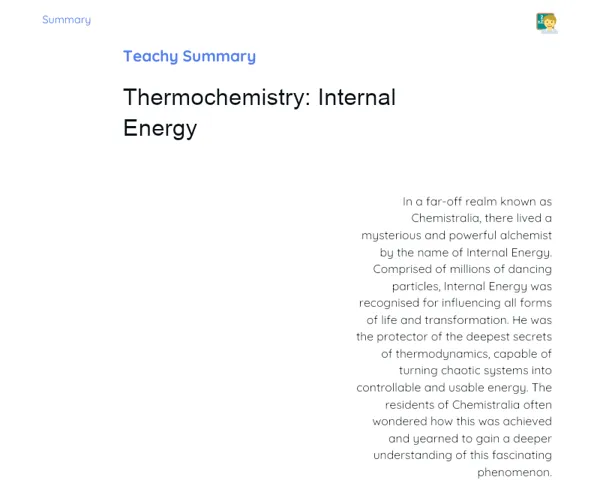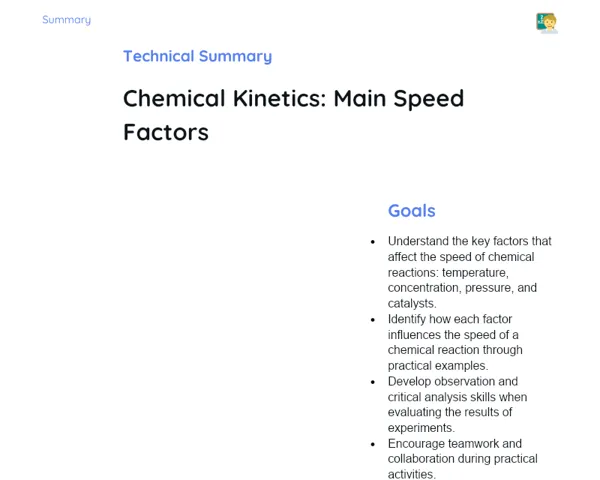Summary Tradisional | Physical and Chemical Phenomena
Contextualization
Every day, we encounter changes that can be categorized as physical or chemical. From boiling water for our morning tea to the rust that forms on exposed iron, these phenomena, while seemingly straightforward, are rooted in unique scientific principles. Grasping the distinction between these phenomena is vital for studying Chemistry and applying this knowledge in everyday scenarios and future careers within the scientific realm.
Understanding physical and chemical phenomena is key to grasping the processes that take place both in nature and various industries. Physical phenomena involve changes that do not alter the substance’s chemical makeup—like ice melting or water evaporating. Chemical phenomena, however, lead to the creation of new substances with differing properties, such as burning paper or rust formation. Acquiring the ability to identify and differentiate between these phenomena is fundamental for Chemistry learning and practical applications in our lives.
To Remember!
Definition of Physical Phenomena
Physical phenomena are changes in matter that don’t affect its chemical composition. This means that while the appearance, shape, or physical state of matter may shift, its internal molecular structure remains unchanged. For instance, when ice melts into water, the chemical composition of the substance (H2O) remains constant; it’s solely the physical state that alters.
What’s notable about physical phenomena is that they are generally reversible. This means that by applying an opposite physical process, we can return the substance to its original state. For example, water that has evaporated can be condensed back into liquid.
Additionally, physical phenomena can include processes such as the deformation of materials (like bending or stretching) and mixing substances that don’t chemically react. These processes are commonplace in our daily lives and can be observed in various practical situations.
-
Do not change the chemical composition of substances.
-
Are typically reversible.
-
Involve changes in physical state, deformations, and mixtures without chemical reactions.
Definition of Chemical Phenomena
Chemical phenomena involve transformations where new substances are created from original ones, thanks to chemical reactions. These reactions break and form bonds between atoms, producing compounds with properties that differ from the initial substances. For example, burning paper results in ash, gases, and other products that were not part of the original paper.
In contrast to physical phenomena, chemical changes are usually irreversible. This means that once a chemical reaction takes place, it’s not easy to revert to the original substances. For instance, a rotting apple can’t be turned back into a fresh apple.
Chemical phenomena are crucial to countless industrial, biological, and environmental processes. Grasping these reactions is vital for advancing new technologies, medical treatments, and analyzing natural processes.
-
Involve the creation of new substances with differing properties.
-
Are generally irreversible.
-
Fundamental to industrial, biological, and environmental processes.
Practical Examples of Physical Phenomena
To gain a clearer understanding of physical phenomena, it's helpful to look at real-life examples. A classic case is the melting of ice. When ice is heated, it changes into liquid water. This process does not alter the chemical composition of ice (H2O); it merely changes from solid to liquid.
Another example is the evaporation of water. When heated, water transforms into steam, again with no change in its chemical composition, just a change in physical state from liquid to gas. These illustrations exemplify how changes in state are common physical phenomena that don’t involve chemical alterations.
Dissolving salt in water serves as another example of a physical phenomenon. When salt (NaCl) dissolves in water, it spreads out evenly, but the molecules remain unchanged chemically. The salt can be obtained back by evaporating the water, showcasing the reversibility of the process.
-
Melting of ice (change from solid to liquid).
-
Evaporation of water (change from liquid to gas).
-
Dissolving salt in water (physical mixture without chemical change).
Practical Examples of Chemical Phenomena
Chemical phenomena manifest in various everyday situations. A common instance is paper combustion. When paper is burnt, it transforms into ash, gases, and other by-products, signifying a chemical reaction has occurred and new substances have formed.
The rusting of iron is another example of a chemical phenomenon. When exposed to air and moisture, iron reacts with oxygen to create iron oxide (rust). This process changes the chemical composition of iron, resulting in a completely different substance with distinct properties.
A further case is the reaction between vinegar and baking soda. When mixed, these two compounds undergo a chemical reaction, producing carbon dioxide, water, and sodium acetate. This reaction is often showcased in educational activities to demonstrate the creation of new substances from the reactants.
-
Burning of paper (results in ash and gases).
-
Rust formation on iron (reaction with oxygen and moisture).
-
Vinegar and baking soda reaction (producing carbon dioxide, water, and sodium acetate).
Key Terms
-
Physical Phenomena: Changes in matter that do not affect its chemical composition.
-
Chemical Phenomena: Transformations resulting in the creation of new substances with different properties.
-
Change of State: Transition between solid, liquid, and gas without chemical alteration.
-
Chemical Reaction: Process involving the breaking and forming of chemical bonds, creating new substances.
-
Deformation: Change in shape or structure of a material without chemical alteration.
-
Physical Mixture: Combination of substances that don’t chemically interact.
-
Irreversibility: Characteristic of chemical phenomena that cannot be easily reverted to original state.
Important Conclusions
In today’s lesson, we covered the essential concepts of physical and chemical phenomena, differentiating between them based on the changes occurring in substances' composition. Physical phenomena, like ice melting and water evaporating, don’t alter the chemical composition of substances and are generally reversible. In contrast, chemical phenomena, such as burning paper and rust formation, lead to the creation of new substances with different properties and are usually irreversible.
Understanding these phenomena is critical not just for the study of Chemistry but for practical applications in life and various industries. The capacity to identify and differentiate these phenomena can influence decisions in fields like healthcare, engineering, and environmental science, making what we've learned very relevant and applicable.
We encourage you to delve deeper into the topic by conducting simple experiments at home and observing the phenomena around you. This exploration not only enriches your scientific insight but also enriches your appreciation of the natural and technological world.
Study Tips
-
Review the concepts of physical and chemical phenomena using diagrams and comparison tables to reinforce the differences between them.
-
Conduct easy experiments at home, like dissolving salt in water or the reaction between vinegar and baking soda, to observe these phenomena in action.
-
Read accessible science articles and watch educational videos that discuss examples of physical and chemical phenomena in various contexts.


